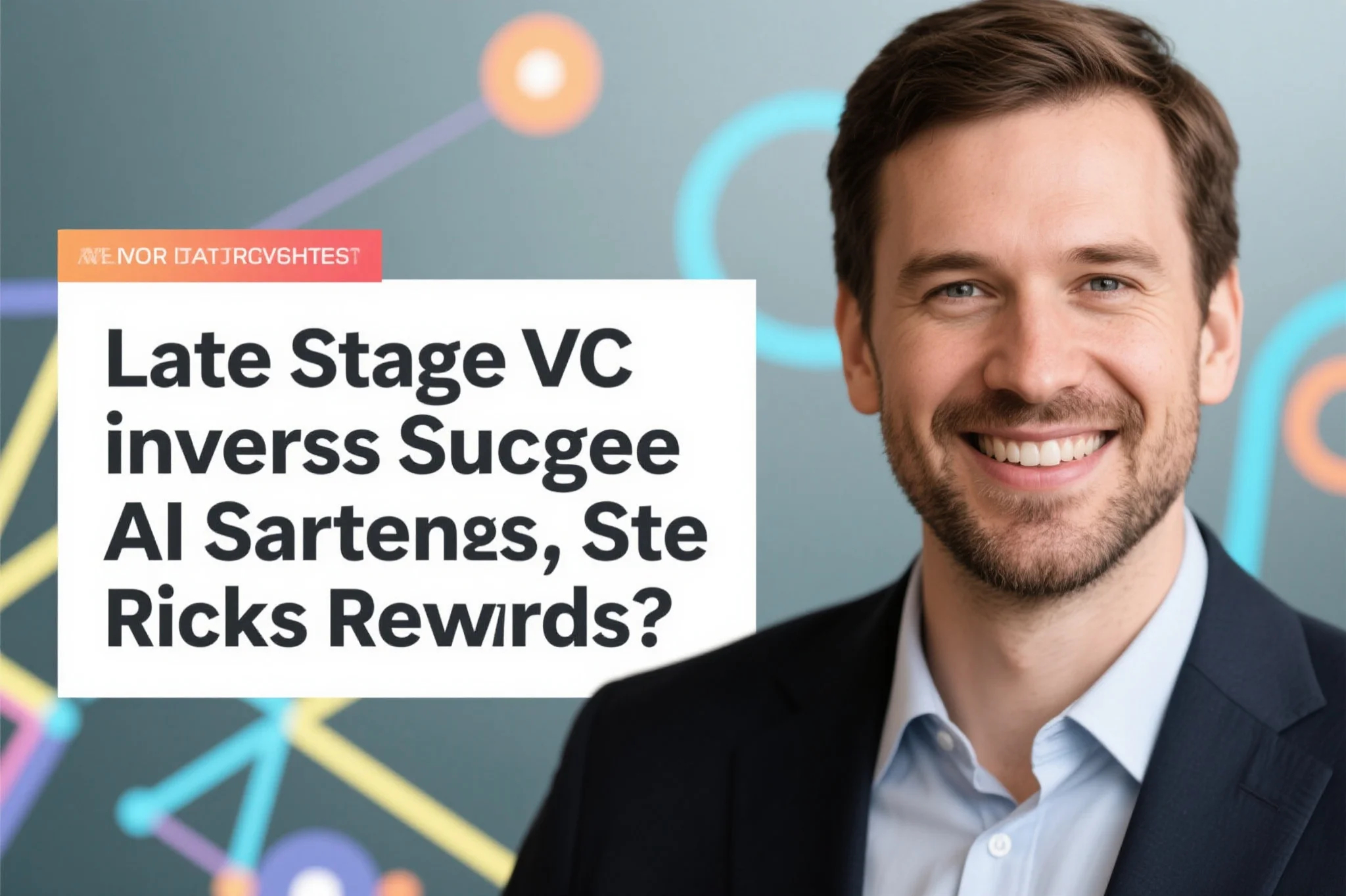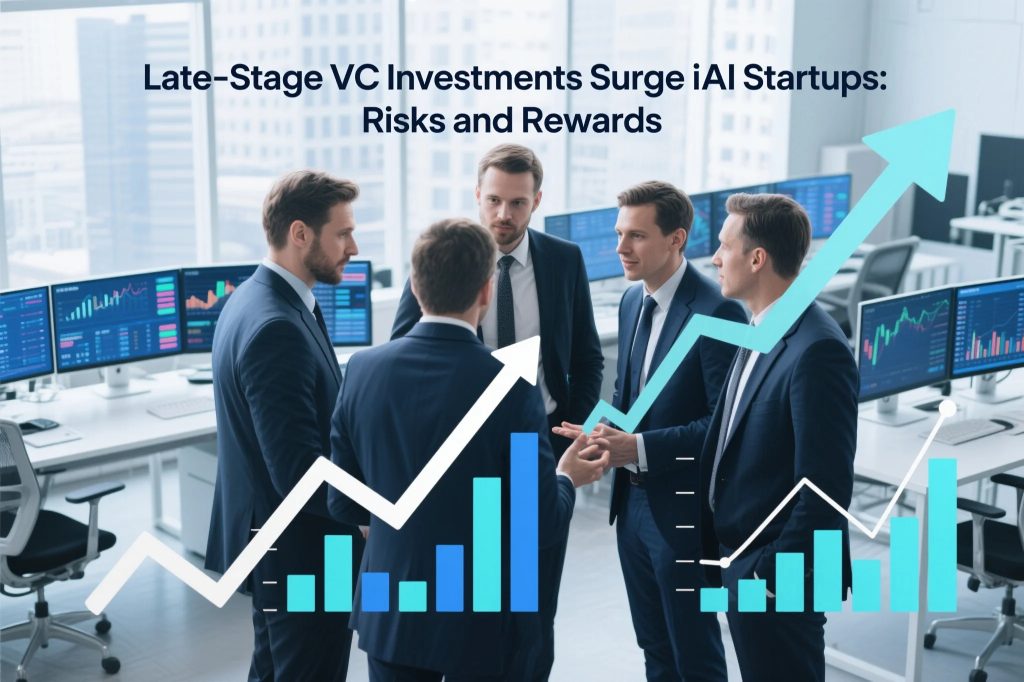
the gold rush in AI’s late-stage funding rounds
The current frenzy surrounding AI startups has created unprecedented activity in late-stage VC markets, with mature artificial intelligence companies commanding valuations that would have seemed fantastical just two years ago. This surge reflects both genuine technological breakthroughs and speculative fervor, creating a complex landscape for investors trying to separate signal from noise. Unlike the early days of AI investing when technical teams could secure funding with little more than a research paper, today’s later-stage deals involve sophisticated scrutiny of commercial traction, intellectual property portfolios, and path to profitability. The most sought-after companies now boast not just impressive algorithms but proven enterprise sales cycles and clear roadmaps for product expansion.
What makes this venture capital trends cycle particularly remarkable is the participation of non-traditional players in later-stage rounds. Sovereign wealth funds, crossover hedge funds, and even public market mutual funds are crowding into pre-IPO AI deals, drawn by the sector’s explosive growth potential. This influx of capital has created a two-tiered market where a handful of “crown jewel” AI companies enjoy seemingly limitless funding options while other promising but less hyped firms struggle to attract attention. For investors navigating these waters, understanding the dynamics of private markets has become essential, as the traditional metrics for evaluating mature startups no longer seem to apply in many AI cases.
valuation dynamics in AI’s growth stage
The valuation frameworks being applied to AI startups in late-stage VC rounds defy conventional wisdom, with revenue multiples expanding rather than contracting as companies mature. Where traditional SaaS businesses might trade at 10-15x ARR at this stage, leading AI companies are commanding 30-50x multiples based on forward projections rather than current performance. This distortion stems from what investors perceive as winner-take-most dynamics in artificial intelligence, where first-mover advantages and data network effects create unusually durable competitive moats. The bet is that today’s premium valuations will look cheap in hindsight if these companies achieve their projected dominance.
However, this optimistic scenario carries substantial investment risk that becomes magnified at later stages. Unlike early-stage bets where failure is expected and baked into portfolio math, late-stage investors typically expect a much higher hit rate. The current venture capital trends show many growth funds stretching their underwriting standards to participate in marquee AI deals, potentially setting the stage for disappointment if execution falters. Meanwhile, the private markets for these shares remain relatively illiquid, meaning markdowns could be sudden and severe if sentiment shifts.
the new due diligence imperative
Conducting proper due diligence on AI startups seeking late-stage VC funding requires specialized expertise that many investment committees lack. Traditional metrics like customer acquisition costs and burn multiples tell only part of the story when evaluating companies whose value derives from proprietary datasets and algorithmic advantages. Investors now need technical teams capable of stress-testing model performance across edge cases and evaluating the durability of training data advantages. The most sophisticated firms have begun hiring machine learning PhDs as full-time investment professionals, recognizing that understanding the technology is as important as analyzing the financials.
This heightened scrutiny reflects growing awareness of the unique investment risk factors in AI. Model decay, regulatory uncertainty, and the potential for disruptive open-source alternatives all represent existential threats that don’t appear on traditional risk matrices. Current venture capital trends show leading firms developing proprietary evaluation frameworks that go beyond standard cap table analysis to assess technical moats and research pipeline quality. In private markets where information asymmetry is high, this level of technical diligence can mean the difference between backing the next market leader and funding an also-ran.
the changing structure of late-stage deals
The deal terms for AI startups in late-stage VC rounds have evolved significantly from standard growth equity templates. Liquidation preferences that might have been 1x non-participating in traditional tech deals are now frequently 2x or higher in competitive AI rounds, reflecting both the premium investors are paying and their desire for downside protection. Warrant coverage has become common again after falling out of favor during the bull market, with some deals including 10-20% coverage to compensate for rich valuations. These terms reflect the tension between founders’ pricing expectations and investors’ concerns about investment risk in a frothy market.
Another notable shift in venture capital trends is the resurgence of structured equity in late-stage AI financing. Convertible instruments with valuation caps, once primarily an early-stage tool, are appearing in growth rounds as investors seek ways to participate in upside while limiting exposure to potential down rounds. The private markets have also seen increased use of secondary transactions in late-stage AI companies, allowing early employees and investors to partially cash out while maintaining some exposure to future upside. These structural innovations reflect the market’s attempt to reconcile sky-high valuations with uncertain future outcomes.

the IPO pipeline and crossover investors
The anticipated wave of AI startups approaching public markets has created a feeding frenzy among crossover investors seeking to establish positions in what they view as the next generation of tech giants. These late-stage VC rounds often serve as quasi-IPOs, with companies raising hundreds of millions at valuations that would have required public market listings in previous eras. The involvement of public market investors in these private rounds has blurred traditional boundaries, creating a new set of dynamics where private market valuations increasingly influence public market comparables.
This environment creates unique investment risk considerations. Crossover investors often bring different return expectations and time horizons than traditional venture capitalists, potentially creating tension during the transition to public markets. The current venture capital trends show many AI companies staying private longer than their tech predecessors, accumulating far larger valuations before testing public market waters. This extended private phase means the private markets are bearing more of the risk that would traditionally have been distributed across public market investors, potentially setting the stage for more volatile transitions when IPOs eventually occur.
geopolitical factors in AI investing
The late-stage VC boom in AI startups intersects uncomfortably with growing tech nationalism and export control regimes. Investors must now evaluate not just commercial potential but also geopolitical exposure when assessing mature AI companies. Foundational technologies like advanced semiconductors, generative AI models, and autonomous systems increasingly face restrictions on where they can be deployed and by whom. This adds a new dimension to investment risk analysis that didn’t exist during previous tech investment cycles.
These concerns are reshaping venture capital trends in subtle but important ways. Some firms now require portfolio companies to maintain “clean room” development environments that comply with multiple jurisdictions’ regulations. Others are steering investments toward applications with less geopolitical sensitivity, such as industrial AI or healthcare diagnostics. In private markets where liquidity options may be limited by geopolitical considerations, these factors can significantly impact exit strategies and ultimate returns.
portfolio construction in an AI-dominated market
For investors allocating to late-stage VC in this environment, traditional portfolio construction approaches may need rethinking. The concentration of value creation among a handful of AI startups suggests that the power law may be even more extreme in this cycle than in previous tech booms. This creates challenging tradeoffs between diversification and conviction – spreading bets too thinly across many deals may guarantee exposure to the eventual winners while making it difficult to secure meaningful allocations in the most sought-after opportunities.
Sophisticated investors are responding to this investment risk by developing more nuanced approaches. Some are building concentrated positions in a few high-conviction AI leaders while using secondary markets to manage exposure over time. Others are pairing direct investments with broader index-like exposure through specialist funds. These evolving venture capital trends reflect the unique challenges of navigating private markets where a small number of companies may account for the majority of value creation.
preparing for the eventual shakeout
The current exuberance surrounding AI startups in late-stage VC markets can’t continue indefinitely, and savvy investors are already gaming out various scenarios for how the sector might mature. Historical parallels from previous tech waves suggest we’re likely to see consolidation, with winners acquiring the technology and talent of less successful competitors at discounted prices. The coming years may also bring more disciplined valuation frameworks as investors demand clearer paths to profitability and sustainable competitive advantages.
This impending normalization doesn’t negate the transformative potential of AI, but it does suggest that current venture capital trends will evolve. Investors who understand how to navigate the investment risk inherent in this transition will be best positioned to capitalize. The private markets for AI equity may become more segmented, with different valuation paradigms applying to infrastructure players versus application layer companies versus vertical AI specialists. Recognizing these distinctions will separate the successful investors from those who simply rode the hype cycle.